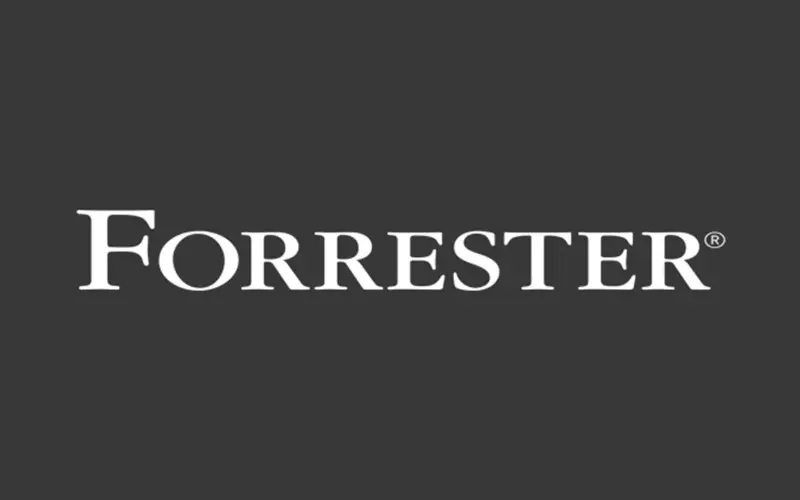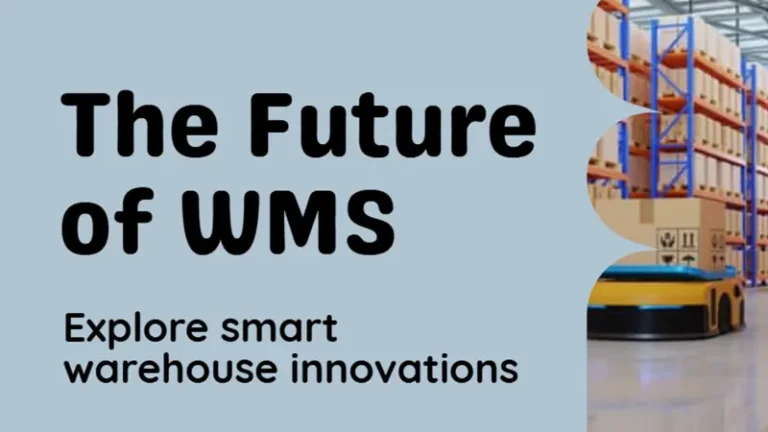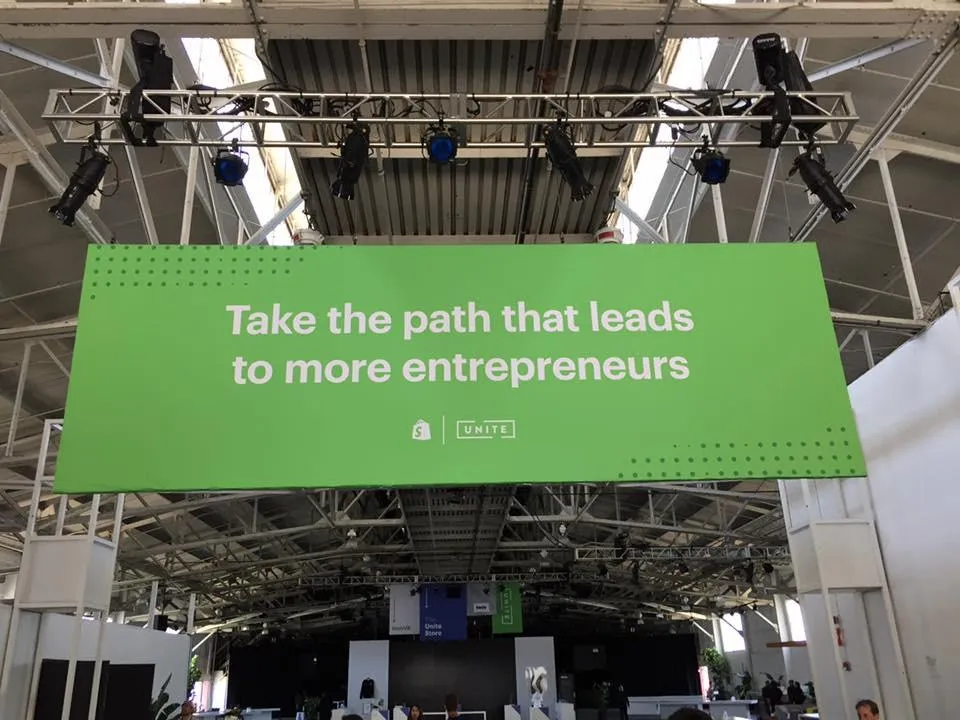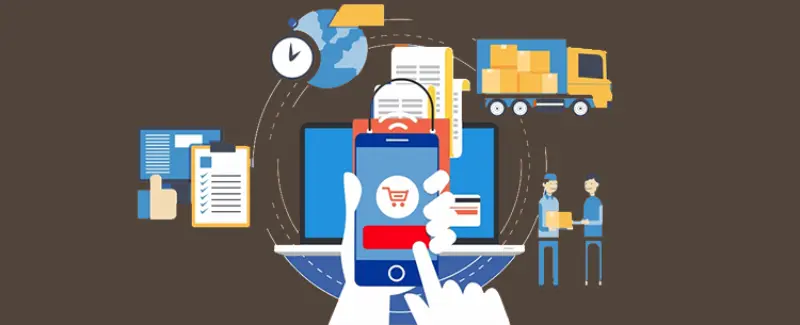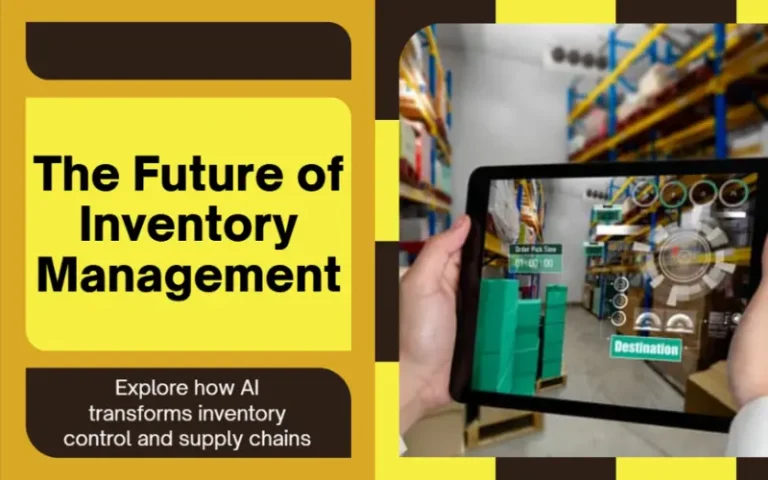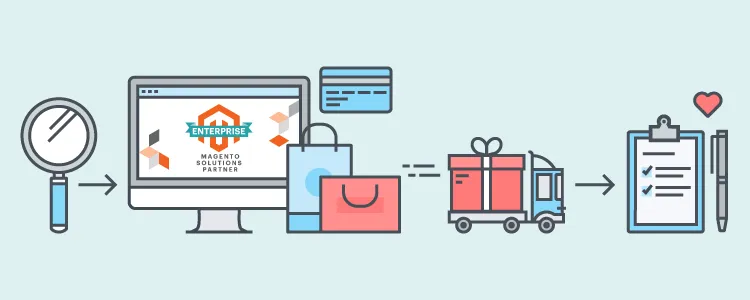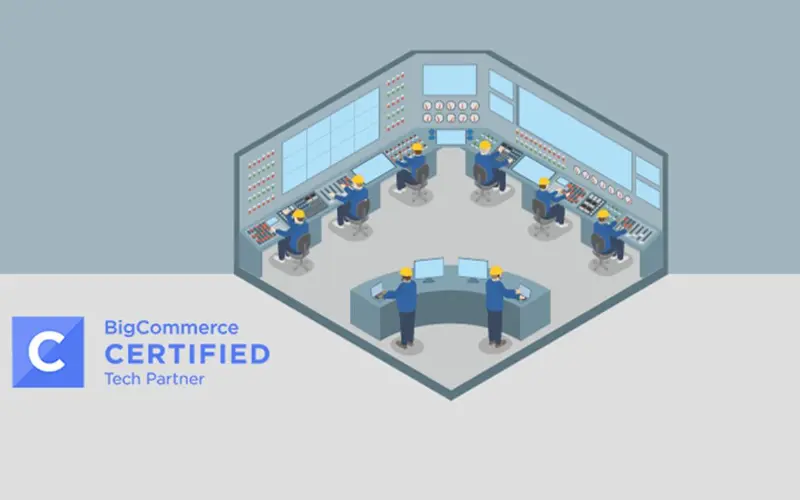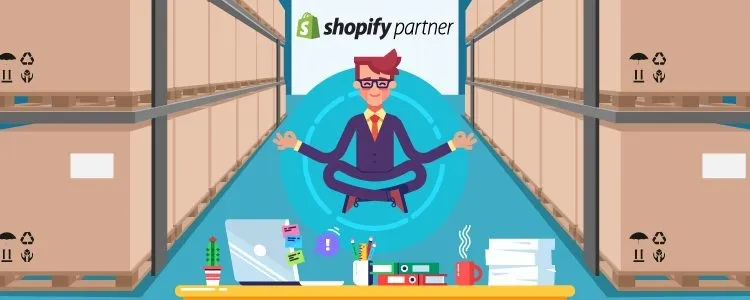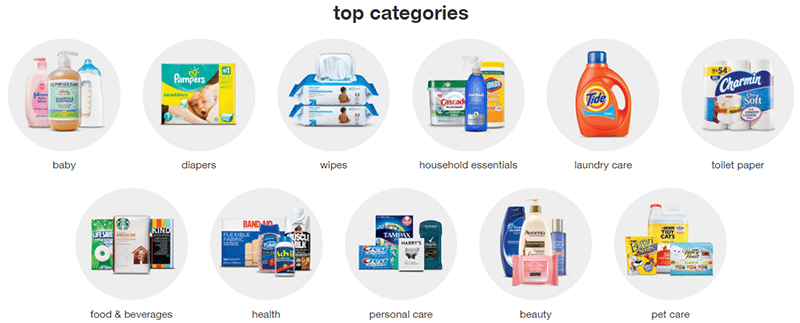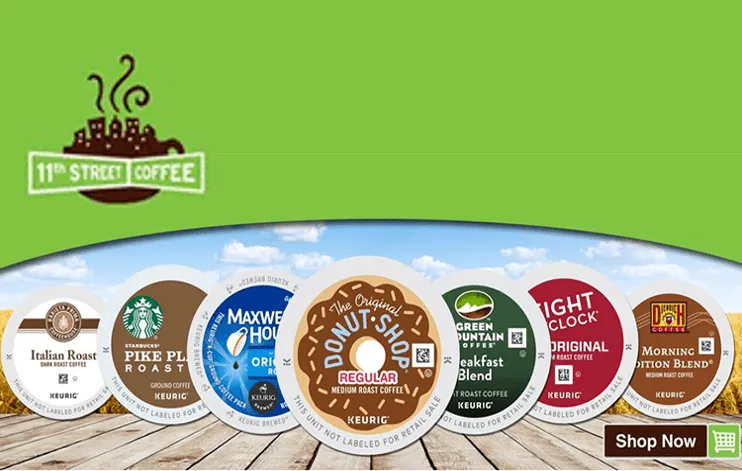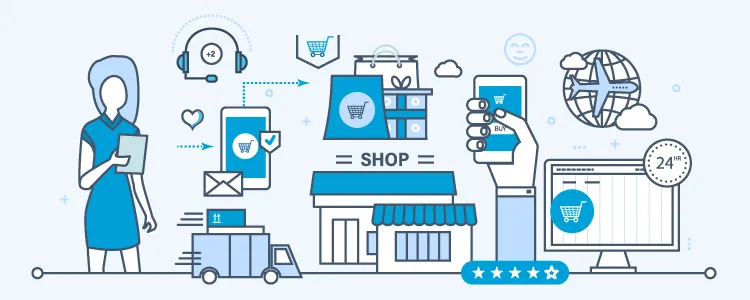Pulse Commerce Recognized by Forrester in 2021 Omnichannel OMS Report
In this article
 2 minutes
2 minutes
2/18/2021
BRIDGEPORT, CT—Pulse Commerce, a leading Omnichannel Order Management System and Inventory Platform, today announced that it has been recognized in Forrester’s Now Tech: Omnichannel Order Management Systems, Q1 2021 report. The report provides an overview of 30 Omnichannel OMS providers across various sizes and geographies.
“We are very excited to be featured in this list of 30 leading providers for OMS”, said Manish Chowdhary, founder and CEO of Pulse Commerce. Pulse Commerce combines OMS with optional components that power eCommerce from end-to-end, including Inventory & Fulfillment Management, Ecommerce Platform, CRM, and POS. Retailers can take advantage of the full Pulse Commerce suite or use it alongside their existing services using our rich and mature integrations.
According to Forrester, OMS provides enterprise-level inventory visibility and distributed order management (DOM), customer order management, and store fulfillment. All of which became more relevant as COVID-19 changed customer behaviors dramatically and eCommerce flourished in 2020.
The spike in order volumes from COVID can lead to a sharp increase in “Where is my order” calls from anxious customers. But Pulse Commerce retailers have proactive shipping notifications that inform retailers of any shipping issues like failed delivery attempts, late deliveries, or weather related delays. So, they can inform customers of any potential delays or issues before customers get restless, turning a potentially bad experience into a loyalty-boosting event. Learn more about building customer loyalty from our in-depth article here.
Since 2020, Pulse Commerce also integrates with Cahoot, an ecommerce order fulfillment network that allows brands and retailers to offer 1-day and 2-day delivery. With Cahoot, merchants can distribute their inventory closer to customers and deliver orders within 1-day or 2-days using inexpensive ground shipping.
Find out how Pulse Commerce makes commerce simple through our no-commitment demo.
About Pulse Commerce
Pulse Commerce is the leading cloud platform for enterprise order & inventory management, empowering retail leaders with unprecedented visibility and control of inventory, orders, and customers. Retailers rely on Pulse Commerce to improve order turnaround, increase customer satisfaction, and optimize inventory control and fulfillment costs.
About Forrester
Forrester Research (Nasdaq: FORR) is one of the most influential research and advisory firms in the world. We work with business and technology leaders to develop customer-obsessed strategies that drive growth. Through proprietary research, data, custom consulting, exclusive executive peer groups, and events, the Forrester experience is about a singular and powerful purpose: to challenge the thinking of our clients to help them lead change in their organizations. For more information, visit forrester.com.
Turn Returns Into New Revenue
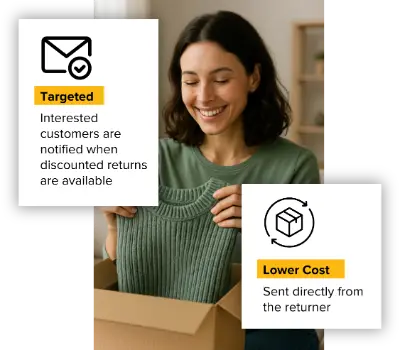
Shopify Unite 2019
In this article
 1 minute
1 minute
June 18-20, 2019 | Beanfield Centre, Toronto, Canada
At Shopify Unite, partners and developers from around the world come together for three days of conversation about the future of commerce, connection to like-minded peers, and celebration of shared achievements. Attendees will hear from Shopify leadership, get an exclusive glimpse at product roadmaps, and explore the opportunity ahead.
If you’re a Shopify Partner or Shopify Developer, this conference is for you!
This three-day conference is for Shopify Partners and Shopify Developers who build apps and custom integrations, or who work with Shopify merchants providing services like web design, development, marketing, business strategy, and more.
Register for the conference now!

Turn Returns Into New Revenue

The Definitive Guide to Distributed Order Management System
In this article
 19 minutes
19 minutes
- I. Introduction
- II. The New Ecommerce and Retail Realities in the Age of Amazon Prime
- III. What is Distributed Order Management?
- IV. Distributed Order Management System Capabilities
- V. Omnichannel Commerce and Distributed Order Management – A Match Made in Heaven
- VI. Distributed Order Management Software Deployment Models
- VII. Distributed Order Management System Software Vendor Selection
- VIII. How to Calculate the ROI on Order Management Systems
- IX. Tips for Successful Distributed Order Management System Implementation
- X. Conclusion
I. Introduction
Almost every “next year’s retail trends” article includes omnichannel commerce as one of the potential saviors of non-Amazon retail as we know it. The conventional knowledge is that multichannel merchants’ only chance of surviving is to take advantage of their biggest assets, their stores, to deliver services that Amazon cannot. By combining the power of their stores and their ecommerce websites they can create a retail whole greater than the sum of its parts.
How can siloed commerce systems and processes transform into a unified platform — one that can deliver on the promise of omnichannel commerce? BPR’s Ken Morris’ perspective is that, “Retailers aren’t going to throw their legacy applications away, they’re not going to throw their investments away, but what they have to do is link it all in real time.” The solution: “The most important component is a middleware layer—a piece of software that connects the dots.”
Distributed Order Management System (DOM) is that middleware. Distributed Order Management is the unsung hero of omnichannel Retail Commerce, a hero rarely mentioned in articles about buy online pickup in store.
Continue reading to learn why distributed order management systems have taken on such an important role in retail innovation, and the practical implications for your business.
II. The New Ecommerce and Retail Realities in the Age of Amazon Prime
Amazon generated over 25% of all U.S. Retail growth in 2016[1], and their sales represented 5% – 6% of total U.S. retail sales. This one behemoth pushed all others aside to eat an outsized chunk of retail pie growth. Many analysts consider Amazon Prime to be a significant growth driver, with over 90mm Prime members[2] who have access to movies, e-books and photo storage, at no additional charge. Of course, free 2-day shipping is included too.
For perspective, at $99 per year, that’s $9B in Prime Membership revenue, before a single purchase is made on the site. Collectively, consumers with Prime Memberships have a $9b incentive to purchase on Amazon to take advantage of 2-day free shipping. The psychological pull is strong — “Why should I try to meet the $75 free shipping minimum on otherwebsite.com when I already have free shipping on Amazon?”
The new ecommerce realities are margin eaters. Over 90 million Prime consumers expect:
- Free and fast shipping options
- Date-certain delivery choices (Amazon typically offers 4 options)
- Frequent, accurate, multi-device order status updates (website, mobile, text)
- Frictionless returns
- Lower prices, with multiple merchants offering the same products on Amazon Marketplace
As a result merchants face new challenges. How can you capture your fair share of ecommerce growth, while also:
- Adding free shipping and multiple, date-certain delivery choices
- Providing frequent, accurate, order updates
- Offering simple returns and exchanges processes
- Holding prices in check
Meanwhile, many pure play ecommerce businesses are far more complex today than they were 15 years ago. The days of a single ecommerce storefront are long gone, with many pure-play ecommerce merchants also selling through marketplaces, including Amazon, to ride the coattails of their huge traffic. In terms of sourcing, merchants purchase from multiple vendors, and they’re also selling products fulfilled by drop-shippers.
Multichannel retailers with bricks and mortar storefronts entered the ecommerce fray quite a while ago. Their challenges are even more daunting. Sales channels no longer operate in silos. Many are seeking to offer omnichannel services that pure play ecommerce player like Amazon cannot (until recently). Buy online and pickup in the store; buy online and return to the store; inventory optimization across stores, ecommerce storefronts, and warehouses; persistent shopping carts that remain current as consumers move from the website to the mobile device to the store; ship from store. The list is growing.
The new reality is that the companies who are capable of creating omnichannel experiences for customers, to differentiate versus Amazon, are most likely the ones who will come out ahead in the retail shakeout currently underway. The merchants that consistently deliver stellar and consistent service as consumers shop across channels, and transform their sales channel silos into an integrated whole will be the winners.
[1] https://www.digitalcommerce360.com/2017/02/17/us-e-commerce-sales-grow-156-2016/
[2] http://www.businessinsider.com/amazon-prime-subscribers-chart-2017-10
III. What is Distributed Order Management?
We’ll define Distributed Order Management by first defining Order Management in the context of a simple ecommerce business with an online storefront and a single fulfillment center.
Order Management is the capture and processing of a customer order, followed by the assignment of that order to a fulfillment center or 3PL to pack and ship the item(s). Order management also includes reverse logistics (returns). In this simple case, there is only one location receiving returns, so tracking is straightforward, as is adding the item back into inventory.
Distributed Order Management (DOM) was born out of challenges that arose as ecommerce grew more complex. A DOM addresses the challenges that channel proliferation and rising expectations introduced. Many online-only businesses now sell through multiple channels – their own storefronts plus multiple marketplaces. Sourcing and fulfillment are more complex too, with products fulfilled by multiple warehouses, dropshippers, and 3PL’s.
New challenges are plentiful:
Challenge #1: With multiple sales channels, how do you ensure you only sells items that are in stock?
How does the ecommerce storefront evaluate whether an item in the shopping cart is still in stock? If the last item is sold through your storefront, will your marketplace stop selling the item? Or continue selling?
Challenge #2: How do you decide which fulfillment center should handle an order?
With orders coming in from multiple storefronts, and being distributed to multiple fulfillment centers, a new question emerges. Should you ship from the fulfillment center closest to the ship-to-address? Or to the fulfillment center with the highest days of inventory on hand? How will you handle an order that includes 2 items that are not in the same warehouse? What about an item that is out of stock, but on its way to the warehouse?
Challenge #3: Which carrier should be used to ship faster and cheaper?
Even with Amazon’s economies of scale, shipping costs were over 17% as a percent of their average order value in 2016. To keep shipping costs in check, which carrier should you use for a specific delivery — e.g. which one has the best price for 2-day guaranteed delivery from North Carolina to Texas?
Challenge #4 (and 5 and 6): Bricks and Mortar
Now add brick-and-mortar storefronts into the mix. How can you keep a real-time holistic pulse on inventory with orders coming in from online sources and items also being sold in stores? How can you squeeze synergy out of bricks and clicks? How can your store associates accept a return for an item purchased online? Will it be reflected in inventory? If an item is out of stock in your fulfillment center, can you sell it online and ship from a store? The questions, challenges and opportunities are endless.
Taking these questions a step further, If a retailer intends to deliver consistent experiences across all channels, and to put all of their inventory to work (e.g. an online order can be shipped from a store), complexity increases exponentially. Silo’d systems can’t possibly keep up.
A Distributed Order Management System processes orders from multiple sales channels and intelligently routes them to the ideal fulfillment center. Some can even select the ideal shipper, too. Orders are turned around faster and more accurately; inventory turns increase; shipping costs decrease. Implemented properly, the Order Management System squeezes more out of your prior commerce technology investments, unifying them to orchestrate streamlined operations, optimized inventory, faster order turnaround, and better cross-channel customer support.
IV. Distributed Order Management System Capabilities
An order management system resolves the challenges outlined above by:
- Synchronizing real time Order and Inventory data with all sales channels and fulfillment centers
- Processing orders from multiple sales channels (e.g. fraud checks, payment processing, address correction)
- Calculating the optimal fulfillment location based on priorities (e.g. closest to customer; fulfillment center with highest inventory)
- Routing the order to the ideal fulfillment center and maintaining up-to-date inventory information.
The distributed order management system also does far more. It not only routes the order, it prioritizes fulfillment of each order against the others, and manages back-orders and reservations for pre-launch products.
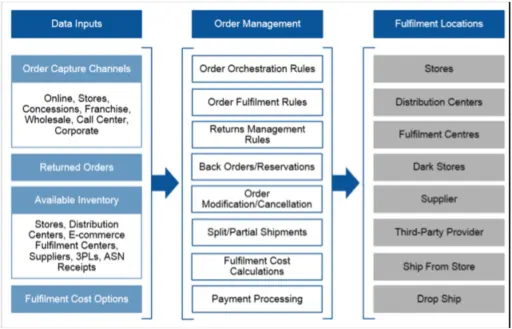
Source: Gartner Market Guide for Retail Distributed Order Management Systems, 2017
Capabilities include:
- Single data repository of all orders and all inventory from all retail channels and fulfillment centers, providing real-time inventory to POS, fulfillment, and ecommerce platforms. An enterprise DOM will also house customer order histories, and product and pricing information.
- Order acceptance from multiple sales channels, including marketplaces.
- Payment processing and checkout, including credit checks, fraud checks, payment authorization, tax and export duty calculations, and refund payment processing.
- Order routing to the ideal fulfillment center or dropshipper based on customized rules and priorities, to optimize inventory turns, or reduce shipping costs and delivery times. Typically integrated with shipping carriers, the DOM can select the ideal carrier for the order.
- Order modification or cancellation via any channel (online, store, contact center) prior to shipping.
- Order tracking and lead-time estimates throughout the entire order lifecycle.
- Omnichannel service enablement for buy online pickup in store, buy online return to store, ship from store, and ship to store services
- Sophisticated handling of pre-orders, back-orders, and order splitting. For example, routing pre-orders and backorders to fulfillment as soon as inventory is available.
An enterprise strength DOM also manages product information across multiple sales channels and includes business analytics tools and reporting to make maximum use of the DOM’s robust order and inventory data.
The power of these capabilities is immense. Consider some real-life shopping situations.
A shopper is in a fashion retail store, and the store doesn’t have the blouse in stock in her size.
Without a DOM, she will leave empty handed. At best, a high-touch store associate can call around to other stores to find one with the item in stock. These calls take time, and may be fruitless. With a DOM, they have real-time access to inventory availability across the entire enterprise. A store associate can rapidly order online for in store pickup, order online for delivery to the customer, or have the item shipped from another store to the customer.
A consumer needs to buy a specific item tonight, and wants to make sure the item is in stock first.
Without a DOM, it’s not possible for the ecommerce site to display store product availability. The information sits in silos. If he’s shopping on REI.com, he’ll find out the closest store with the item in stock, and will be given the option to buy online and pickup in the store. The ecommerce website reveals real-time inventory across every store. Each store’s POS is linked to the DOM, updating inventory every time the cash register rings.
A consumer buys online and wants to modify the order before it has shipped.
Without an Order Management System, once the order is sent to a fulfillment center, there is no turning back. It’s in a queue to ship. The consumer will have to wait for it to ship, and to be delivered, in order to exchange it. With a DOM, the consumer can modify the order in the store, via the contact center, or on the ecommerce website. Each has order-level data, with up-to-date fulfillment information, and the ability to change the order and update all of the systems touching the order.
Behind the scenes, a DOM’s impact on inventory turnover can be profound too. A 5% reduction in out of stocks and a 5% reduction in overstock situations can move a merchant from being in the red to in the black — especially during the holidays! The DOM accomplishes this by intelligently routing orders to optimize inventory across every fulfillment center, retail location, and ecommerce website.
V. Omnichannel Commerce and Distributed Order Management – A Match Made in Heaven
To see why Omnichannel Commerce and Distributed Order Management make such a wonderful couple, it’s worth taking the time to understand some related terms.
Multichannel Retail is exactly what it sounds like. For example, a retailer may sell through a handful of brick-and mortar stores, an ecommerce storefront, and Amazon marketplace. Whether the channels act as silos or are integrated, the term multichannel refers to selling products through multiple sales channels. These channels can operate in distinct silos from end-to-end. E.g. different warehouses for online versus stores.
Omnichannel Commerce refers to seamless, consistent, effortless, integrated customer experiences for shoppers as they traverse different sales and support channels. Shoppers enjoying a stellar omnichannel experience feel like, regardless of sales channel, that they’re interacting with a single company that sees them as one individual — whether on the website, in a store, or on the phone with a contact center rep, the shopper sees one company. For example, customers may have a single, persistent shopping cart on the website, their mobile device, and even on in-store tablets (e.g. Crate & Barrel’s wedding registry). Or a customer may buy online and wish to return to a store. Or a shopper may buy online, and make an exchange in-store before the item has even shipped. At every step, the store associate, contact center rep, and website have the necessary information and processes at their fingertips to serve the customer with knowledge of their past interactions.
How can a merchant make this happen? How can a store associate modify an online order? When they do, how will the fulfillment center be informed not to ship? How will inventory be tracked across all channels? Distributed Order Management.
Omnichannel Commerce and the Distributed Order Management System is a match made in heaven. A DOM enables Omnichannel Commerce to flourish. Without demand for omnichannel commerce, a DOM’s purpose in life would be far diminished.
VI. Distributed Order Management Software Deployment Models
An Order Management System can unify existing, siloed, commerce technology to unleash a commerce whole greater that the sum of its technology parts. Deep business significance is hidden between these buzzwords. Most merchants did not start out as multi-channel businesses. An online only store might have, over time, decided to sell through marketplaces. Or, a brick and mortar chain may have decided to begin selling online. Growth-minded merchants find, at some point, that technology that worked so well when they served only one channel is not up to the complex tasks of breaking down business silos.
A Unified Commerce Platform integrates the commerce technology stack to enable these complex transactions. A Distributed Order Management system is the catalyst that transforms existing, siloed technology into a Unified Commerce Platform.
If you’re planning to implement a robust order management system, what is the best approach? For a comprehensive overview, see our blog post and whitepaper, “Which OMS is Best for Me? Home Grown, On-Premise, or SaaS?” Given today’s technology trends, start with the assumption that a cloud-based solution is probably the best choice, because you’ll avoid the headaches of running a data center, updating software, managing compliance, and other distractions from your core expertise. Answering a handful of questions can help a mid-market merchant decide which approach is best for their business:
Question 1: Does your business have a state of the art data center? If not, then there’s little point in considering anything other than SaaS. With increasing security concerns, especially in ecommerce, the risks are simply too high to run your commerce technology on anything less than a top-notch data center.
Question 2: Does your business have truly unique needs that would require customization? If so, are these unique needs due to the nature of your legacy systems? If you’re customizing to put a bandaid on old technology, then it’s time to update the house of cards rather than add more complexity. If you truly do need customization, then a premise-based solution will offer greater customization capabilities.
Question 3: Are your customization needs so vast that even a premise-based solution can’t meet your needs? Are you considering building instead of buying? If so, then you should only consider going forward if software development is a core strength and differentiator for your company. If not, then you’re heading down a treacherous path building a homegrown solution.
VII. Distributed Order Management System Software Vendor Selection
The most important step in selecting an Order Management System is to very clearly identify all of your requirements. You can find a comprehensive overview of potential features in our Order Management System RFP Template. You can also find an overview requirements often missed until it’s too late in, 5 Hidden Costs to Avoid when Buying an OMS. Following is just a sampling of the kinds of requirements you may not have considered without some prompting.
Distributed Order Management: Do you need purchase order support for B2B ecommerce? Do we want to enable customers to choose their delivery date? Do we intend to enable customers to set up recurring orders (e.g. subscribe and save)? Do we need to integrate drop shipping into our OMS?
Inventory Management: Do you need to track inventory across multiple sales channels and fulfillment centers? Do you need the OMS to create vendor purchase orders? In bulk? Do we intend to use store inventory for ship-from-store and buy online, pickup in store services?
Customer Service: Do CSRs need to be able to search all orders across channels? Do you intend to empower CSRs to modify website orders? Do you want CSRs to issue refunds and credits?
Stores and Fulfillment: Do you want to customize shipping criteria or carrier by SKU or delivery location? Do you intend to support for buy online pickup in store / return to store?
Other Systems: With which systems must the DOM integrate?
If this is your first DOM procurement, the requirements phase is absolutely critical. Even our list of over 150 features (see above) doesn’t cover everything one might need.
With a clear view of your needs and their relative importance, comparing and selecting vendors becomes a typical procurement exercise. Just never take your vendor’s word for their depth of capabilities. Make sure you see all of it in action.
VIII. How to Calculate the ROI on Order Management Systems
The Return on Investment for Order Management Software is gained through a combination of efficiency gains that reduce costs and free up cash.
Inventory Optimization
A DOM pulls a number of levers to increase top line revenue (fewer stockouts) and increase inventory turns (less overstock). Enterprise-wide visibility reduces need for “just in case” inventory while Intelligent Order Routing reduces “slow inventory.” The ability to “ship from store” enables you to fulfill orders when your warehouse is out of stock. All of these improvements reduce the inventory needed to run the business, freeing up cash and saving on warehouse costs (i.e. fewer square feet needed).
Return = Reduction in average inventory x Line of Credit Interest Rate
Fulfillment Efficiency
The DOM routes orders near-instantaneously to the optimal fulfillment center. The routing includes accurate packing slips and shipping labels (i.e. employee proof). Error reduction is a hard cost saving, with less return shipping, customer support hours, and reverse logistics management.
Return = Reduction in return shipping expense + reduction in reverse fulfillment labor costs + reduction in returns-related customer service call labor expense
Employee Efficiency
The DOM assigns orders for more efficient fulfillment, including packing slips and shipping labels, shedding some man hours. Contact center reps benefit handsomely, with the ability to see all orders, inventory, shipping status and customer order history with one login. Issue resolution time can be cut dramatically.
Return = reduction in issue resolution time x CSR pay rate
Pulse Commerce’s OMS ROI Calculator calculates these potential profit impacts, based on your own inputs and assumptions.
IX. Tips for Successful Distributed Order Management System Implementation
The success of your deployment, or lack thereof, can be the difference between a high ROI investment and a negative one. The most important component of a successful implementation is your requirements gathering effort during procurement. In general, the success of a SaaS implementation is driven by three factors:
(1a) Did you seek all of the capabilities you’ll need (see above)?
(1b) Does the software do all that you were told it does? This includes performance, latency and uptime, too.
(2) Does the OMS integrate well with your existing commerce technology?
A successful deployment rests on the OMS’ API’s. Robust and well-documented APIs, bode well for the implementation. If custom API’s are needed, then you may be on track for project overruns — in both time and money.
(3) Is vendor technical support a partner? Or an adversary? Will you spend more time convincing tech support to help? Or more time getting help? This is one of the most important areas to pressure test with customer references.
X. Conclusion
At its core, omnichannel commerce is just a fancy way of saying, “treat customers as they’d expect you to if everyone in your company and all of your systems knew every interaction you’ve ever had. All while allowing customers to treat all sales channels and touchpoints as one, single entity. As customers go from Pinterest to your website, to your store, it all feels like one seamless shopping experience. A Distributed Order Management System is that centralized memory and up-to-date repository of these insights. It’s also the conductor of the modern retail commerce orchestra — a conductor that appears to be on the verge of fame.

Turn Returns Into New Revenue

Accessories Retailer Uses New Order Management Technology to Accelerate Growth
Compression Garments Retailer Squeezes Double-Digit Growth Out of New Ecommerce Technology
Washington, DC – October 30, 2017 – BrightLife Direct, Inc. is the brain child of Kip Bright. It started with Kip, a marketer by trade, finding an opportunity in the world of compression socks. This category is considered medical equipment — compression socks are a necessary treatment for people with a variety of ailments, including varicose veins, lymphedema and venous insufficiency.
As a medical device, insurance reimbursements propped up pricing to levels too high for many of the uninsured. Kip saw an opportunity to develop a more affordable private label brand for this chronically underserved market.
And the Allegro brand of compression stockings was born.
Soon thereafter, BrightLife Direct was born. BrightLife is an ecommerce business dedicated to making compression socks and therapies, delivered direct-to-consumer, with exceptional customer service at low prices. They sell name brands as well as their own private label brand. And they’ve continued to grow every year since inception, both revenue and employees.
They bring a deep passion to customer service – as Kip puts it:
Compression socks really DO help. If a customer’s first pair of stockings is binding or too tight, we’ll try different sizes or styles until we find them the perfect fit. Our first goal is to make the customer want a second pair.
Growing Pains
Like most growing retailers, the commerce technology that helped them grow for their first 12 years eventually grew tired.
As BrightLife Direct’s business expanded, customer service and fulfillment challenges increased. Their customer service team needed faster access to telephone and website orders. They also needed the ability to quickly modify orders, process returns, refunds, and exchanges, and manage the increase in inventory, and orders going out the door.
BrightLife Direct was bursting at the seams with separate systems for managing orders and inventory, the ecommerce website, and reporting. They were managing product content for thousands of SKUs with spreadsheets, entering the same information into multiple systems. Errors were increasing, productivity was declining, and their existing technology was becoming a hindrance instead of an enabler.
Slash Your Fulfillment Costs by Up to 30%
Cut shipping expenses by 30% and boost profit with Cahoot's AI-optimized fulfillment services and modern tech —no overheads and no humans required!
I'm Interested in Saving Time and MoneyThe New World of Unified Commerce
As a high growth apparel and accessories retailer, they needed a scalable solution that could support fast growth and simplify operations.
Instead of manually importing product information, they needed a Product Information Management (PIM) system supporting ecommerce, the contact center and eventually marketplaces.
Like other business owners, they needed powerful reporting and business intelligence. To make this all happen, BrightLife needed to transform their disparate systems into one, unified commerce platform.
Enter Pulse Commerce
BrightLife Direct selected the Pulse Commerce Order Management System plus its native Ecommerce Solution in 2012. Pulse Commerce’s Platform includes a built-in product information management (PIM) solution which greatly simplified product catalog and content management, while restoring sanity to the purchasing, forecasting and inventory departments.
Pulse Commerce also delivered innovative customer-facing features that increased website conversions. For example, the Global Express Address Entry feature simplified shopping cart checkout for customers and for the call center staff, pre-emptively eliminating bad addresses and deliveries. BrightLife now had the modern ecommerce and order management features needed to offer group discounts to wholesale customers and offer creative retail coupons and promotions, all while protecting profit margins. Management was more at ease with Pulse Commerce’s enterprise security and PCI compliance capabilities, while marketing and procurement folks loved the in-depth reporting and powerful analytics capabilities built right within the platform.
Fast Double-Digit Growth and New Challenges Arrive
The benefits of switching to the Pulse Commerce platform were immediate, freeing up the BrightLife Direct team to spend more time selecting the right merchandise, helping customers choose the right products, and delivering orders to customers faster.
Looking for a New 3PL? Start with this Free RFP Template
Cut weeks off your selection process. Avoid pitfalls. Get the only 3PL RFP checklist built for ecommerce brands, absolutely free.
Get My Free 3PL RFPSales increased by 55% and conversions increased 33%. All while back office productivity increased dramatically too.
The improvement in logistics, customer service and operations further freed up the merchant’s time to pursue new opportunities. BrightLife Direct started selling on Amazon.com, opened a new web storefront built on Magento, and partnered with a 3PL that was using NetSuite ERP. They needed their systems to adapt quickly to these changes and to their growing business needs. With the addition of both Amazon Marketplace and Magento Web Store sales channels, inventory allocation and management in real-time became much more complex, but the omni-channel features within the Pulse Commerce platform allowed for quick and seamless integration. All systems could now take advantage of the reliable and cutting-edge functionality. Pulse Commerce now acts as conductor, keeping this larger and more complex digital commerce orchestra in sync while supporting and enabling new and profitable growth for BrightLife Direct.
Pulse Commerce’s Order and Inventory Platform has transformed our ability to leverage all our sales, service and fulfillment channels, including the Magento e-commerce storefront. We’ve seen improvements across the board with higher customer satisfaction and streamlined back-office productivity, increasing by at least 35%. With powerful APIs and native integration with Magento, NetSuite, and Amazon Marketplace, we are able to grow our business faster and run better with Pulse Commerce. We can only see so far, but we know that Pulse Commerce will adapt as our needs and priorities change, and keep us ahead in the rapidly changing retail environment through continuous innovation.
~Brita Ericson
Director of eCommerce & Operations, BrightLife Direct
Throughout the past 17 years, BrightLife Direct has focused on helping customers find the right solution for their needs. Regarding their technology partner, Brita Ericson added, “Pulse Commerce is a lot like us. They really listened to us to understand our technology ailments, and they have delivered the perfect treatment. We’ve not only beaten our technology woes; we’ve turned our technology into a distinct competitive advantage.”
About BrightLife Direct, Inc.
BrightLife Direct has been serving the community of individuals who wear compression garments for more than 17 years. The Washington, DC-based company offers both name brand and their own private label products at discounted prices.
About Pulse Commerce
Pulse Commerce is the leading cloud platform for enterprise order & inventory management, empowering retail leaders with unprecedented visibility and control of inventory, orders and customers. Retailers rely on Pulse Commerce to improve order turnaround, increase customer satisfaction, and optimize inventory control and fulfillment costs.

Turn Returns Into New Revenue

Why Mid-Market Magento Merchants Need Distributed Order and Inventory Management Software
In this article
 7 minutes
7 minutes
- Introduction
- Magento’s Role In the Ecommerce Battlefield
- Magento Storefronts Live in a Vibrant Developer Ecosystem
- Why is a Distributed Order and Inventory Management Platform Needed a Growth and Scale?
- The New Role of an Inventory Management and Order Fulfillment Platform
- The Benefits of Deep, Certified Magento Integration
- Robust APIs and Certified Magento Integration
Introduction
Magento Open Source Ecommerce Platform is an important player in today’s Amazon vs. everyone ecommerce battlefield. With a large contingent of Magento developers, spread across thousands of companies, the pace and depth of product development is orders of magnitude higher than any merchant could muster on their own.
Magento focuses on the core platform capabilities, while an ecosystem of Magento certified software companies and individuals focus on building extensions and themes in categories like marketing, analytics, site optimization, SEO/SEM, customer support, accounting and finance, order and inventory management, warehouse management, and many other functions. This vibrant combination of extensions, themes and partners extend the Magento solution to do more, a lot more. Magento clients benefit handsomely by this distributed product development marketplace.
Order fulfillment and inventory management are two of the most critical back-office functions in ecommerce. These two capabilities are at the core of customer satisfaction and profitability. Pulse Commerce, a cloud-based, Magento certified order and inventory management platform, has filled that gap, and has a deep native integration with Magento.
Continue reading to learn:
- Magento’s role as a software vendor in the ecommerce battlefield
- The Magento developer ecosystem
- Order & Inventory Management’s (OMS) role in growth, profitability and customer loyalty
- The advantages of deploying a certified Magento OMS Integration
Magento’s Role In the Ecommerce Battlefield
In the ecommerce war, there’s Amazon… and then there’s everyone else. Among the top 50 ecommerce retailers, Amazon captured over 50% of all ecommerce revenue in 2016 — 530x more revenue than #50 and 6.5x more than Wal-Mart!
Magento Open Source (formerly Magento Community Edition) and Magento Commerce (formerly Magento Enterprise Edition) are important weapons in this ecommerce battlefield. Their open-source software democratizes ecommerce technology with a powerful platform, rich features, a virtually unlimited ability to customize, extend and scale. Including their cloud-based solutions, Magento Pro and Magento Starter, it powers over 250,000 ecommerce storefronts globally.
Magento Storefronts Live in a Vibrant Developer Ecosystem
Organizations running Magento Open Source Edition typically have the need and the resources to control all aspects of their ecommerce front-end user experience. At the same time, they have little motivation or business need to re-create the back-office. For example, you’d be hard pressed to find a $100mm retailer writing their own proprietary accounting software.
Magento, with its open source software licensing model, provides everyone else an ecommerce platform that that has an army of over 150,000 mercenary developers globally, continuously improving and adding new extensions to their already feature-rich platform. Magento enables everyone else to band together and create a better platform for all Magento users.
While front-end interfaces will likely evolve, and change in ways we cannot imagine, Magento’s certified partners, like Pulse Commerce are building and integrating best-of-breed back office tools that merchants have little need to customize. That accounting software, for example. Order and Inventory Management is another example.
At Pulse Commerce, we’ve found that companies without an enterprise order and inventory management platform can’t scale efficiently as they cross through the $10 to $20mm mark on their way to $500mm.
Why is a Distributed Order and Inventory Management Platform Needed a Growth and Scale?
Growth introduces new complexities that a light order management system can’t address.
- Additional sales channels (e.g. marketplaces) put pressure on fulfillment. Without a holistic, single view of all orders across all channels, it’s harder to track orders in danger of shipping late. Fulfillment centers are more likely to introduce errors or get backlogged.
- Additional vendors and SKUs, coupled with additional sales channels, often transform product information management from an afterthought into a bottleneck. Without automation, information must be added to multiple systems in myriads of formats.
- More fulfillment options make it harder to have real-time visibility into overall inventory and location-specific inventory. Without an up-to-the-minute view, more stockouts occur or more capital is tied up in overstock.
- Together, these growth complexities hamper customer support. As more channels and fulfillment options are added, CSRs may need better tools to streamline issue escalation processes. Also, without good technology support, CSRs may have to switch between multiple software applications to resolve customer questions and complaints.
- For merchants seeking to add omnichannel services, new capabilities are difficult to implement without a centralized real-time view of orders and inventory. For example, you can’t launch a buy online pickup in store (BOPIS) program because the ecommerce system has now way of ‘knowing’ the available inventory at any particular store.
The New Role of an Inventory Management and Order Fulfillment Platform
Core capabilities begin with a synchronized real-time view of all orders, inventory, customers, products and promotions across all sales channels and all fulfillment centers.
- Distributed Order Management begins with intelligent order routing, and ends with higher inventory turns, faster order turnaround, lower shipping costs, and higher customer satisfaction.
- Routes orders to the fulfillment center with the most inventory to increase turns
- Routes orders to the fulfillment center closest to the customer to save on shipping
- Enables customers to buy an out of stock item on backorder. Or pre-order a new product before it’s available for sale
- Increases efficiency with capabilities for order splitting, returns / reverse logistics, recurring subscription orders (e.g. a monthly recurring coffee order)
- Omnichannel fulfillment gives customers a seamless experience as they interact with your brand across multiple channels.
- Omnichannel customers can buy online and pickup in store because your Magento platform has access to real-time store-level, sku-level inventory.
- CSRs can resolve issues quickly, logging into one system to see what was purchased and where, and make suggestions such as, “you can exchange it at the local store on 123 Main Street for the blue shirt. We’ve already put it on hold for you there.”
- For an ecommerce customer, an order for an item that’s out of stock in the fulfillment center can be routed to a store with the item on hand to ship from the store.
- Multi-location shipping, drop-shipping and EDI integration, certified UPS, USPS and FedEx integration streamline fulfillment and vendor management
- Inventory Management is a key to profitability.Consider a company with $25mm in annual revenue, and a 40% cost of goods sold. If inventory turns are 5.0, then, on average, $2mm+ inventory is required. If inventory turns are 10.0, then only $1mm inventory is required, on average. That’s $1mm (4% of revenue) in additional cash in the bank.
- Real-time visibility of company-wide inventory powers Omnichannel capabilities.
- With a real-time view of days of inventory, you can proactively reduce stockouts, reduce overstock and increase cash flow.
- Payments and Risk Management is your lifeblood. Delayed payments hurt cash flow, and fraudulent transactions increase chargebacks and distract your company from real customers.
- An enterprise OMS performs fraud checks and streamlines PCI compliance and reporting
- You’ll get paid for online store purchases faster, and have support for all leading payment options.
- Reporting and Analytics can change the trajectory of your business. Insights gained from drilling deep into your data (orders, inventory, customers, products, and promotions) helps identify opportunities as well as areas to fix. For example:
- Sales and Order data at the company, channel, store, sku, and item levels – compared to prior period, prior year, and forecast.
- Visibility into shipping costs, returns (by channel, store, product, fulfillment center)
- Promotion ROI calculation
- Exception reports, such as SKUS with less than 10 days of inventory in stock.
The Benefits of Deep, Certified Magento Integration
A cloud-based enterprise OMS, sitting outside the Magento technology stack, provides all the value we’ve outlined above, while also reducing the risk of having all your technology eggs in one basket.
Robust APIs and Certified Magento Integration:
- Enables your tech team to stay focused on the core ecommerce capabilities without having to manage back-office technology
- Reduces complexity in adding new marketplaces, sales channels, shippers, payment options and more
- Maintains a cloud data repository outside your ecommerce platform, reducing operational risk.
- Accelerates implementation and time to market.
Pulse Commerce’s Magento Certified Order and Inventory Management Platform brings all of the capabilities discussed in this post, and much more to Magento customers. We’re proud to be members of the everybody else community, helping mid-market merchants compete, win, and grow. Contact Sales today for a free demo or a no-obligation consultation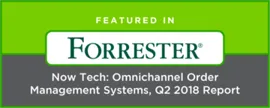

Turn Returns Into New Revenue

BigCommerce Enterprise Order & Inventory Management Software
Since BigCommerce’s 2009 launch, nearly 100,000 stores have earned over $8B through the platform. With BigCommerce running the ecommerce platform technology in the cloud with seamless upgrades, merchants can focus more on the areas they know best – merchandising, pricing, promotion, and product assortment management, to name a few.
This focus has fueled growth for thousands of online merchants. If you’re one of BigCommerce Enterprise’s success stories, you may find that operations that were in perfect sync while generating $5mm in annual revenue can’t keep up anymore as sales pass through the $10mm mark.
Two areas where growth hits operations hardest are also important drivers of your customer satisfaction and profitability:
- Order fulfillment; and
- Inventory management
Order fulfillment and inventory management processes must adapt and change as sales volume increases.
Growth is hard work! And when your business is feeling growing pains, it can be hard to figure out exactly which processes need the most change to help your business scale.
Slash Your Fulfillment Costs by Up to 30%
Cut shipping expenses by 30% and boost profit with Cahoot's AI-optimized fulfillment services and modern tech —no overheads and no humans required!
I'm Interested in Saving Time and Money5 Symptoms of Tired Order Fulfillment and Inventory Management Processes
Through our own work with BigCommerce and hundreds of other merchants, we’ve seen five common symptoms that inform that it’s time to upgrade order fulfillment and inventory management processes:
Symptom 1: Late shipments increase as new sales channels are added
- Fulfillment centers get bogged down with inbound orders from multiple sales channels.
- You don’t have a pulse on which orders are in danger of shipping late – with multiple systems you don’t have a single view of all orders.
Symptom 2: Slower time to market and higher returns
- As the product sku count increases, so does the amount of product information to manage.
- As you add more channels (e.g. online marketplaces), product information must be added to multiple systems in myriad of formats.
Symptom 3: More stock outs or capital tied up in overstock
Your order management system lacks real-time visibility into inventory – e.g. inbound, outbound and in-transit inventory – creating inefficiencies:
- Orders get routed to fulfillment centers or stores that are low on stock, instead of those that have excess inventory.
- Sometimes items appear to be out of stock, but are actually available through different fulfillment centers, drop-ship vendors or brick-and-mortar stores.
Symptom 4: Slower customer service with fewer delighted customers
- As you add channels and fulfillment centers, CSRs have to switch between multiple software applications and business processes to resolve customer questions and complaints. CSRs may also be overburdened by the sheer volume of inquiries or not have streamlined issue escalation processes that are needed at a larger volume company growth stage.
Symptom 5: Unable to offer true omnichannel experiences
- Buying online and returning to a store can a clunky process if your Point-of-Sale software doesn’t have access to the ecommerce orders.
- You may have excess inventory in stores, and you’d like to route ecommerce orders to ship-from-store – but your systems don’t support it yet.
- You may have difficulty managing a buy online, pick up in store (BOPIS) program because your online and store systems don’t communicate very well or in real-time.
Looking for a New 3PL? Start with this Free RFP Template
Cut weeks off your selection process. Avoid pitfalls. Get the only 3PL RFP checklist built for ecommerce brands, absolutely free.
Get My Free 3PL RFP4 Benefits of Adding an Order and Inventory Management Software to your BigCommerce Store
BigCommerce Enterprise Order and Inventory Management Software by Pulse Commerce eliminates these symptoms while enabling scalable growth.
It all starts with a real-time 360-degree view of orders and inventory.
The OMS synchronizes data from your commerce systems, enabling automated business decisions with real-time data. Every order, all inventory, customer history, promotions and product information are centralized within the OMS – so you can process higher order volume across more sales channels and fulfillment options. Benefits include:
1. Better cash flow through higher inventory turns
You can track inventory turns and profitability by vendor, by Sku, or by category. And, you can drill down into this view by store, by channel, or zoom out at the company level.
You can also make smarter purchasing decisions – e.g. ordering items mid-season that you know will sell out before the next purchasing cycle.
2. Faster shipments and reduced costs via intelligent order routing
Deliver orders faster while cutting shipping costs by having the OMS select the order fulfillment center closest to the customer. Shipping costs can be reduced 10% to 20% using this strategy, while shaving a day or more off of delivery times.
Reduce overall cost of inventory by having the OMS route orders to optimize inventory – for example, fulfilling from the store or the fulfillment center with the highest days of inventory on hand.
3. Quicker onboarding of new vendors and products while minimizing errors
Your BigCommerce product information format requirements may be different from those of marketplaces and comparison shopping engines. Entering the same data multiple times in different formats wastes time and increases the error rate.
Pulse Commerce’s Order and Inventory Management for BigCommerce manages that for you. Enter the information once, and then simply map the product content to the various templates once.
4. Better customer support and faster issue resolution
Without an OMS, your CSRs may have to log into multiple systems to handle a simple inquiry. For example, logging in to BigCommerce and a POS to find a purchase record, then your inventory management system to ensure an item is in stock in the fulfillment center or a store and then an email program on when the new stock might be arriving to what locations.
A modern OMS like Pulse Commerce’s provides all of that information in one place, and empowers the CSR to resolve the issue without unwanted switching costs and delays.
Issues are resolved faster. Customers are happier, CSRs are happier, and your CFO is happier too.
You can get a better sense for the financial benefits of an OMS by reviewing our Order Management System ROI Calculator. And, it’s prudent to know that all order and inventory management software are not created equal. You can also gain insight into the pitfalls of a “light” OMS by reading The 9 Deadly Sins of a Light Order Management System.
To learn more about how an OMS can benefit BigCommerce merchants, contact Pulse Commerce Sales to schedule your personalized 1-on-1 demo. If you are a Shopify Plus or a Magento merchant, we have good news for you too.
One of the critical deciding factors when selecting PULSE Commerce was after we evaluated at least a half-dozen leading cloud solutions we found Pulse Commerce to be the best Mid-Market Order and Inventory Management System tightly integrated with BigCommerce that offered all the features and capabilities that we need to scale and support sales through multiple channels, as well as to unify our BigCommerce website, call center and our Point-of-Sale (POS).
We found Pulse Commerce technology to be solid, their professionalism refreshing and technical support super responsive. I feel they are committed to our success which goes beyond just software features and functionality.
~Pat Murray
Director, Congregation of the Sisters of St. Joseph

Turn Returns Into New Revenue

Order and Inventory Management Software for Shopify Plus Brings Zen to the Back-Office
Shopify Plus Order and Inventory Management Software
The Shopify Plus retailer roster is full of inspiring stories of high growth merchants. While every merchant is using the same Shopify technology platform for their ecommerce storefront, their growth stories are all different. Different categories, different merchandising strategies, different marketing and pricing tactics.
As is the case for all other businesses, retailers have to adapt as they grow. Processes that work well at the $5mm annual revenue mark typically begin to break down as retailers approach doubling in size.
High growth typically causes order fulfillment and inventory management processes to buckle under the pressure of higher volume and more complex operations.
Following are the other common growth initiatives that can stretch fulfillment and inventory management processes within an organization – challenges that require a technology upgrade in order to scale.
Slash Your Fulfillment Costs by Up to 30%
Cut shipping expenses by 30% and boost profit with Cahoot's AI-optimized fulfillment services and modern tech —no overheads and no humans required!
I'm Interested in Saving Time and MoneyGrowth Initiative
Addition of new sales channels:
Marketplaces, Brick & mortar stores, Popup Stores
Challenges
Late Shipments and More Returns
- How will fulfillment centers manage inbound orders from multiple sales channels with varying service level requirements?
- How will marketing ensure that product information is consistent across channels, each with its own set of rigid format?
Growth Initiative
Addition of new warehouses and fulfillment centers
Challenges
More Stockouts or Capital Tied up in Overstock
- How will you intelligently route orders to the ideal fulfillment center? Which center has the most inventory? How to maximize the purchase and distribution of stock to maximize return on capital?
- How will you optimize inventory across multiple fulfillment centers? Can you automate this process?
Growth Initiative
Addition of new product categories and suppliers and products
Challenges
Slower Time to Market and Product Information Errors
- Will the old ways of onboarding suppliers and products scale?
- Are you going to take longer to add new products to all your sales channels?
- How will you forecast demand for products you haven’t previously sold? How will you decide how much inventory to purchase?
Growth Initiative
Sales and Volume Growth
Challenges
Slower Customer Service with Fewer First Contact Issue Resolutions
- How many systems must contact center reps log into in order to resolve customer questions?
- Can they view all orders, payments, promotions, pricing and past orders and returns history for the customer – across all channels and fulfillment centers — by logging into one system?
- How quickly can the Rep access all the vital info and is able to act with confidence to resolve the customer’s issue rather than escalate or have customer jump through phone trees?
Growth Initiative
Omnichannel Strategy
Challenges
Systems breakdown between Cross Channels and Data Inconsistency
- How will you enable customers to buy online and pickup/return in store?
- How will you ship from store with your current systems?
- How will CSRs handle multichannel customer requests?
Shopify Plus Inventory and Order Management Software by Pulse Commerce is purpose built to streamline each of these challenges, plus many others.
Looking for a New 3PL? Start with this Free RFP Template
Cut weeks off your selection process. Avoid pitfalls. Get the only 3PL RFP checklist built for ecommerce brands, absolutely free.
Get My Free 3PL RFPWhat is an Enterprise Order & Inventory Management Platform?
At it’s core, the platform keeps important data synchronized across commerce systems – ecommerce website, ERP, Accounting, CRM, Supplier Systems, etc. It maintains a real-time view of all orders, inventory, customers, products, pricing and promotions across all sales channels and fulfillment centers.
This real-time 360-degree view of the business, coupled with intelligent workflows, gives the order and inventory management system powerful capabilities that helps Shopify merchants grow with scale. The platform helps merchants:
- optimize inventory across fulfillment centers;
- orchestrate real-time, automated business decisions that ensure orders are fulfilled accurately and on time;
- synchronize vendor and product and pricing information across systems; and
- empower customer service representatives to resolve customer issues, regardless of the sales channel for the purchase
Shopify Plus and Pulse Commerce together are enabling mid-market merchants like us to deliver stellar omnichannel services and superior customer experiences while improving operational efficiency
~Suresh Chaganti
Vice President (IT), SureFit
Following are just 4 ways you can benefit from adding the Pulse Commerce Order and Inventory Management Platform to your Shopify ecommerce operations:
1. Inventory Management and Optimization
Increase inventory turns by reducing stockouts and reducing overstocks. You’ll gain a real-time view of inventory across all websites, brick-and-mortar stores, warehouses (including Amazon FBA), and fulfillment centers. With that insight available to all of your systems, you can manage operations more efficiently.
- Allocate and track inventory across multiple locations.
- Track inventory turns and profitability by item, sku, or vendor to optimize purchasing.
- Use ‘Days of Stock’ reports to avoid stockouts.
2. Distributed Order Management with Intelligent Order Routing
Ship from the ideal fulfillment center to ship faster, ship cheaper, or increase inventory turns. With knowledge of inventory levels at every location, the Pulse Commerce Order Management System (OMS) for Shopify can send new orders to the optimal fulfillment center. And merchants can choose their criteria:
- Ship faster:
- Sends order to the center closest to the customer.
- Order splitting – The OMS can split an order between 2 or more fulfillment centers to speed up delivery time or to facilitate drop-ship fulfillment.
- Optimize inventory:
- Send the order to the center least likely to run out of an item.
- Ship from a store that is sitting on too much stock.
3. Product Information Management
Onboard new suppliers and products once, and easily synchronize your Shopify store with other systems. Imagine a streamlined onboarding process? Import a new product catalog without incident, edit product information in an intuitive interface, create sales, discounts, and special pricing using flexible pricing rules that accomodate various business objectives, and then syndicate the information to your Shopify ecommerce site, brick-and-mortar stores, and online marketplaces. What can be an error-prone distraction becomes a simple process. Better product information leads to higher conversions, and also cuts down on returns.
4. Customer Service
Give contact center team members access to a single view of all orders, customers, inventory, products and promotions. Give your contact center the tools they need to quickly handle Shopify order and return inquiries. End the days of logging in to an order system, a CRM, and an inventory management software to resolve a single issue. To illustrate, consider a customer purchases an item online, and realizes afterwards that it’s the wrong size. The customer calls the contact center to modify the order. With an OMS, the CSR logs into a single system. Then:
- The CSR can look up the order by customer name, by phone number or by order #
- The CSR can modify the order, after first ensuring that the item is available in inventory
- The CSR can even offer the customer to pick up the modified order at a local store
Without an OMS, the CSR might have to log into more than one order system just to find the order. Then the CSR has to log into a separate inventory system to ensure the item is in stock prior to modifying the order. And, the offer to pick up in a store is near-impossible to manage.
Scaling Made Easy: Calis Books’ Fulfillment Journey
Learn how Calis Books expanded nationwide, reduced errors, grew sales while cutting headcount, and saved BIG with Cahoot
See Scale JourneyWe’ve just scratched the surface of the benefits of a Shopify Plus Order & Inventory Management platform. To learn more about how an Enterprise OMS can benefit Shopify Plus merchants, contact Pulse Commerce Sales to schedule your personalized 1-on-1 demo.
You can get a better sense for the financial benefits of an OMS by reviewing our Order Management System ROI Calculator. And, it’s prudent to know that all order and inventory management software are not created equal. To learn more about the downside of a “light” OMS, read, The 9 Deadly Sins of a Light Order Management System.


Turn Returns Into New Revenue

How Mid-Market Merchants Increase Profits with Subscriptions and Continuity Programs
In this article
 4 minutes
4 minutes
What Every Merchant Wants
Every merchant wants to:
- Convert first time shoppers into loyal customers
- Increase the lifetime value of their customers (CLTV)
- Reduce customer acquisition costs as a percentage of CLTV
The most direct way to gain repeat business is for customers to subscribe to ongoing purchases of your products.
There is no better or easier way to increase customer lifetime value than to have a customer subscribe to recurring monthly or quarterly purchases.
- Would you rather sell a single $31 box of diapers? Or 12 boxes at $28 each?
- Would you rather have a predictable revenue stream, or choppy ups and downs in order volume?
Slash Your Fulfillment Costs by Up to 30%
Cut shipping expenses by 30% and boost profit with Cahoot's AI-optimized fulfillment services and modern tech —no overheads and no humans required!
I'm Interested in Saving Time and MoneyPopularity of Subscriptions is Growing
Retailers and B2B merchants have caught on to subscription magic, and recent growth in subscription and membership commerce has been tremendous:
- Subscribe and Save
Dozens of retailers offer subscribe and save options for consumer and business staples – e.g. monthly diaper, coffee, or office supplies deliveries. Amazon offers the service in 28 categories, and also enables its FBA merchants to offer Subscribe and Save for their products.
20% of Sales from Subscribe & Save
Puracy is an Austin-based company offering natural personal-car products. In just one year, Subscribe & Save has become 20% of their annual revenue. Subscribe & Save has helped lower their user acquisition costs, provided reliable business, and expanded their brand. The best part about it? “It’s business you can count on.” Source: Amazon
- Monthly Box Clubs
My Subscription Addiction lists over 2,000 “of the month” clubs. Visits to subscription box websites grew by over 3,000% in a 3 year period, up from 722,000 visits in 2013 to 21.4 million in 2016 – Source: Inc. Magazine
Retailer Benefits from Ecommerce Subscription and Continuity Programs
The benefits are clear, yet it’s worth recounting them.
-
Higher Lifetime Customer Value. Consider a coffee services company that sells to businesses.
- A portion of annual revenue is locked in and stable.
- Their customers don’t have to think about coffee re-ordering or shipments.
- Coffee and supplies won’t run out, so their customers won’t need to even think about purchasing from a competitor
- The merchant has more opportunities to engage with its customers. According to Narvar’s March 2017 post-purchase benchmark, the click-through-rate on marketing assets that appear on a branded order-tracking page is 3x higher than for marketing emails.
-
Lower Customer Acquisition Costs
- The more repeat customers you have, the lower your overall new customer acquisition costs will be as a % of total sales.
- Loyal customers will refer new customers to your business, further lowering total customer acquisition costs.
-
Better Inventory Forecasting and Management
The portion of inventory dedicated to subscribe and save customers has close to a 100% likelihood of being sold and shipped. Therefore, a known proportion of inventory will have the highest possible inventory turns, reducing overall inventory costs as a percentage of sales, and yielding a higher return on capital.
Looking for a New 3PL? Start with this Free RFP Template
Cut weeks off your selection process. Avoid pitfalls. Get the only 3PL RFP checklist built for ecommerce brands, absolutely free.
Get My Free 3PL RFPIdeal Products for Subscriptions and Continuity
Typical subscription products share a handful of characteristics:
- The items “run out” or get “used up” in a predictable time frame.
Batteries, diapers, socks, water and air filters, office printer ink, coffee, and home cleaning products all get worn out or used up on a fairly predictable basis. - Running out is an inconvenience.
You want batteries when the remote control dies. Running out of diapers is… messy.- Health, household & baby care: Diapers and detergents
- Beauty and Personal Care: Razors, hygiene products and soaps
- Automotive parts: Filters, cleaning cloths
- Office products: Paper, Dry-erase markers, printer ink and toner
- Sports & outdoors: Sports tape, sports drinks, vitamins
- Clothing: Socks, boxers
- Electronics: Batteries
- Pet Supplies: Dog treats and puppy pads
Target’s Subscribe and Save Page
How to Manage a Successful Subscribe and Save Program
There are many operational requirements to consider:
- Payment processing on an automated basis
- Order entry, processing and approval on a scheduled basis
- Inventory allocation and forecasting based on subscriptions and non-subscription sales
- Discounts for subscribe and save
- Easy customer self-service options – e.g. subscription cancellation or modification, address change, skipping a delivery, credit card updates, etc.
- Timely customer communications and personalized email updates
Order and Inventory Management Software
Order and Inventory Management Software simplifies this complexity.
If your commerce technology stack already includes an Enterprise Order and Inventory Management system (OMS), such as the one from Pulse Commerce, then you may already have the tools in place to capitalize on subscription opportunities. In-depth subscription management features are not native to all order management systems, so you’ll need to explicitly inquire about the capability.
Whether your online storefront is running on a homegrown ecommerce platform, or on a cloud provider’s, like Shopify Plus, Magento, or BigCommerce Enterprise, a competent order and inventory management system can streamline every step required for a successful subscribe and save program roll out.
Scaling Made Easy: Calis Books’ Fulfillment Journey
Learn how Calis Books expanded nationwide, reduced errors, grew sales while cutting headcount, and saved BIG with Cahoot
See Scale JourneyConclusion
In conclusion, product subscriptions and continuity orders offer significant upside as long as you have the necessary technology and automation in place. Read 11thStreetCoffee’s case study to learn how a mid-market merchant successfully implemented a Subscribe and Save program. And to learn more about other ways to increase loyalty and customer lifetime value, you might enjoy our webinar, Building an Effective Digital Loyalty Program in the Amazon Age.

Turn Returns Into New Revenue

Kansas City Coffee Retailer Celebrates 50th Anniversary with a New Tech Twist
How Innovative Ecommerce Technology Helped a Local Staple Become a National Brand
Kansas City, MO – October 3, 2017 – Necco Coffee is celebrating its 50th anniversary as the leading coffee services company in the Kansas City metropolitan area.
When Necco Coffee was founded in 1967, it was impossible to envision the future that awaited 50 years later.
Anthony Simone, Senior set out to source a better cup of java for his hometown of Kansas City, Missouri. A coffee connoisseur, he knew what a good cup of joe tasted like, and he knew plenty of people who wanted something better than the grocery store brands in their downtown offices. He grew Necco to become Kansas City’s leader in office coffee and vending services.
At the time, there was no Internet. And there were no K-cups either. Anthony and his company grew, slowly but surely. His service was reliable, delivering on time, and his company always focused on delighting customers. The enterprise expanded to sell coffee supplies, filters, and more.
Fast forward 50 years to 2017, and 11th Street Coffee, the Internet Division of Necco Coffee, is growing fast. 25% fast, while coffee service competitors are either not growing at all or shrinking. Anthony Junior, the founder’s son, is leading that online retail growth with products and sales channels that didn’t exist when he was born. 11th Street Coffee is one of the select few retailers certified to sell Keurig products online. In the span of the last 10 years, they’ve more than doubled their family business by embracing ecommerce, the K-Cup trend, and technology innovation. It has been quite a transformation.
Ecommerce
Ecommerce started off small, piggybacking off the telephone order business. A modest number of orders would come in and go into the queue with the telephone orders scheduled for mail delivery.
And then, the business grew. And grew. Which made it harder and harder to get shipments out the door fast enough. There was just too much paper shuffling. So 11th Street embraced new technology; software that would take their online orders and accurately print out shipping labels and packing slips.
Slash Your Fulfillment Costs by Up to 30%
Cut shipping expenses by 30% and boost profit with Cahoot's AI-optimized fulfillment services and modern tech —no overheads and no humans required!
I'm Interested in Saving Time and MoneyK-Cups
As K-cups gained popularity, the online business flourished even more. Necco and 11th Street Coffee sought a fairly exclusive arrangement to sell Keurig’s K-Cups online. The business really started to take off now, but their technology wasn’t keeping up.
Speed Bumps Ahead
Soon they hit more speed bumps. Customers wanted to sign up online for ongoing subscription deliveries like they could on Amazon.com. 11th Street Coffee wanted to offer online promotions through social media. Customer service personnel needed easy access to modify online orders up until the UPS guy showed up at the warehouse. More customers were buying on mobile devices. With increased online volume, powerful reporting and business intelligence was needed to make better inventory planning decisions. The current platform couldn’t handle any of it.
Technology Innovation and Partnership
The company set out to better manage their online and offline orders, customer service, procurement, inventory, warehouse and fulfillment. They wanted to keep growing without adding more corporate staff – only more people to fulfill more orders.
They evaluated dozens of software platforms, and finally found a partner who could deliver everything they needed and then some. Pulse Commerce helped 11th Street Coffee transition to their next phase of growth, replatforming their ecommerce and back-office technology in 2013 to enable all the new capabilities they needed. Not a single order was missed or delayed in the transition. And, as soon as their new foundation was in place, their growth skyrocketed, and has been running at double digits since.
Looking for a New 3PL? Start with this Free RFP Template
Cut weeks off your selection process. Avoid pitfalls. Get the only 3PL RFP checklist built for ecommerce brands, absolutely free.
Get My Free 3PL RFPSustainable High Growth
Today, their customers ‘subscribe and save’, ordering coffee subscriptions online. 11th Street Coffee sets up new promotions and coupons, and distributes them on social media instantly. 11th Street Coffee creates insightful reports with detailed breakdowns. They easily benchmark their operations and continuously improve using the platform’s built-in tools.
Throughout the past 50 years, Necco and 11th Street Coffee have always focused on the customer — whether delivering around the corner or across the country. And whether they’re taking orders by telephone or by mobile device, customer focus has remained at the forefront of every decision they’ve made. Which is why more and more customers decide to buy from 11th Street Coffee every day.
Pulse Commerce has the same customer-focused philosophy as ours. They have been amazing business partners we’ve come to consider great friends too. We’re confident in our future, in large part because we’re confident in Pulse Commerce.
~Anthony Simone, Jr.
Owner, 11th Street Coffee
About 11th Street Coffee
11thStreetCoffee.com is the Internet division of a trusted, reliable, family owned and operated team of coffee connoisseurs, with over 50 years of experience in providing coffee service. Their goal is to provide the highest quality coffee products, the fastest turnaround, unbeatable discount prices, and great customer service.
About Pulse Commerce
Pulse Commerce is the leading cloud platform for enterprise order & inventory management empowering retail leaders with unprecedented visibility and control of inventory, orders and customers. Retailers, such as Badgley Mischka, Hanesbrands Inc., and Goode Company rely on Pulse Commerce to improve order turnaround, increase customer satisfaction, and optimize inventory and fulfillment costs. To learn more about how Pulse Commerce can increase your business performance by 20% or more, please visit www.pulse-commerce.com or follow @PulseCommerce on Twitter.

Turn Returns Into New Revenue

The New Role of Order Management Software in Inventory Optimization, Customer Satisfaction and Profit Margins
According to Boston Retail Partners’ 2016 POS/Customer Engagement Survey, 85% of retailers indicate that unified commerce is a top priority.
Why? Customer expectations are increasing every day. For example, according to Forrester Research, 25% of online shoppers now expect to be able to buy online and pick up in stores (aka Click and Collect).
It’s becoming impossible to follow customers as they skip across sales channels, first researching online, then buying in a store, then calling a contact center for help – back and forth and back and forth.
Current systems can’t keep up. Most mid-market retailers are running one system for the Point of Sale (POS), another for inventory, another for ecommerce, and still another for warehouse management and fulfillment & shipping. Which one do we go to when the customer calls about an online order? What happens when the contact center rep is asked, “which store has the item in inventory?”
In real life? That contact center is logging in and out of one system after another, trying to figure out how to handle the issue.
Boston Retail Partners suggests that, to create a single unified platform using the systems already in place, the most important component is to add a middleware layer, Order Management Software, that connects the dots.
In our white paper, we outline the critical new role that order management software plays in:
- Optimizing inventory
- Improving customer satisfaction
- Increasing profits
It includes the compelling case study of a growing mid-market retailer that implemented an OMS to dramatically change the trajectory of their business on all 3 fronts – inventory management, customer satisfaction, and profits.
Slash Your Fulfillment Costs by Up to 30%
Cut shipping expenses by 30% and boost profit with Cahoot's AI-optimized fulfillment services and modern tech —no overheads and no humans required!
I'm Interested in Saving Time and MoneyDownload it now to learn why mid-market retailers are turning to Order Management Software to optimize inventory, improve customer satisfaction & increase profits.

Turn Returns Into New Revenue


